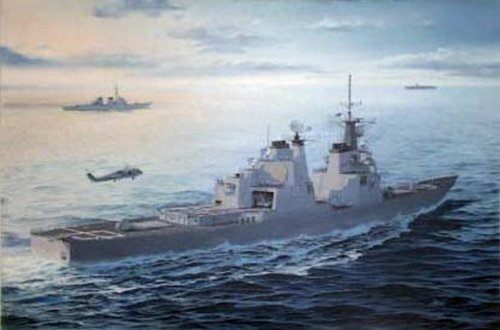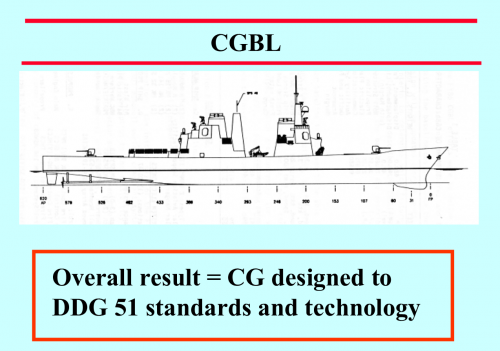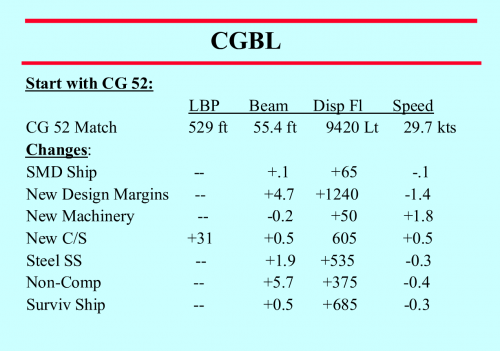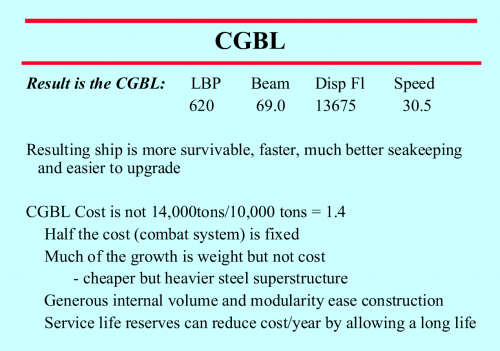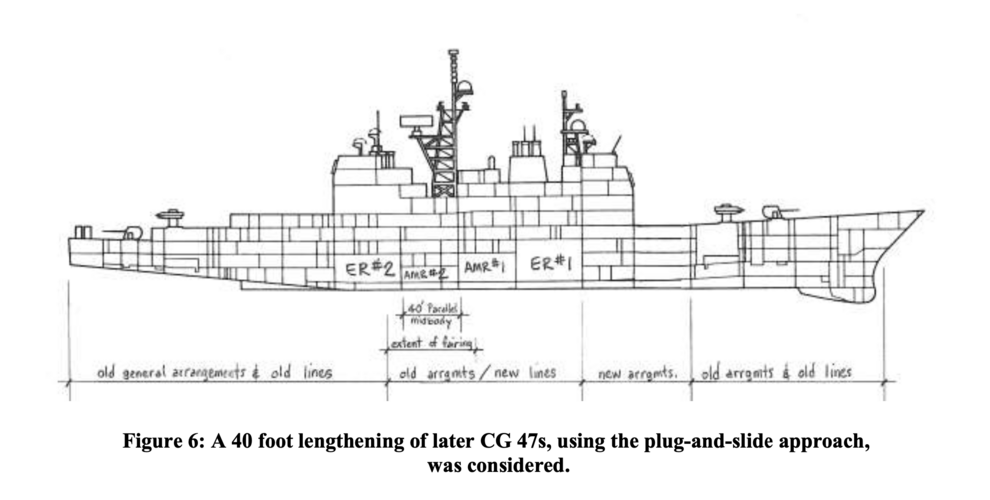According to the Global Security web site the US Navy studied a destroyer design given the cruiser mission:
http://www.globalsecurity.org/military/systems/ship/cruiser-cold-war.htmBy the 1980s, with the advent of the DDG-51 Arleigh Burke destroyers, the distinction between a cruiser and destroyer was blurred. According to the US Navy, a cruiser was focused on anti-air warfare [AAW], and was focused on providing air defense to an aircraft carrier. The destroyer was focused on anti-surface and anti-submarine duties, while also having a substantial anti-air capability.
From the very first studies, the DDG was given two contradictory roles: 1) to be a smaller force-number-builder and 2) fix things that were perceived to be wrong with the CG 47. Specifically, it was felt that a ship armed with Tomahawk, unlike a carrier escort, could fight while hurt. Even if the ship were slowed and had lost a combat system capability in one or more areas, if it could receive Tomahawk targeting data and launch, the self-guiding missile would be fully functional. Thus the DDG received a steel superstructure, increased blast overpressure resistance, more armor, a collective protection system and radar cross section reduction measures. Thus there is a historically anomalous situation of the destroyer being a more survivable ship than the cruiser.
A question that has continually come up is "what if a new cruiser, with weapons the same as the CG 47 class, were designed starting with the DDG and expanding into the cruiser mission?" In order to have a math model of such a ship for future technology studies, Navy Preliminary design created the Cruiser Baseline (CGBL). The study also included weapons systems modularity and increased service life reserves. The resulting ship had a waterline length of 600 feet, a beam of 69 feet, a displacement of about 13,500 tons plus a 30+ knot speed.

